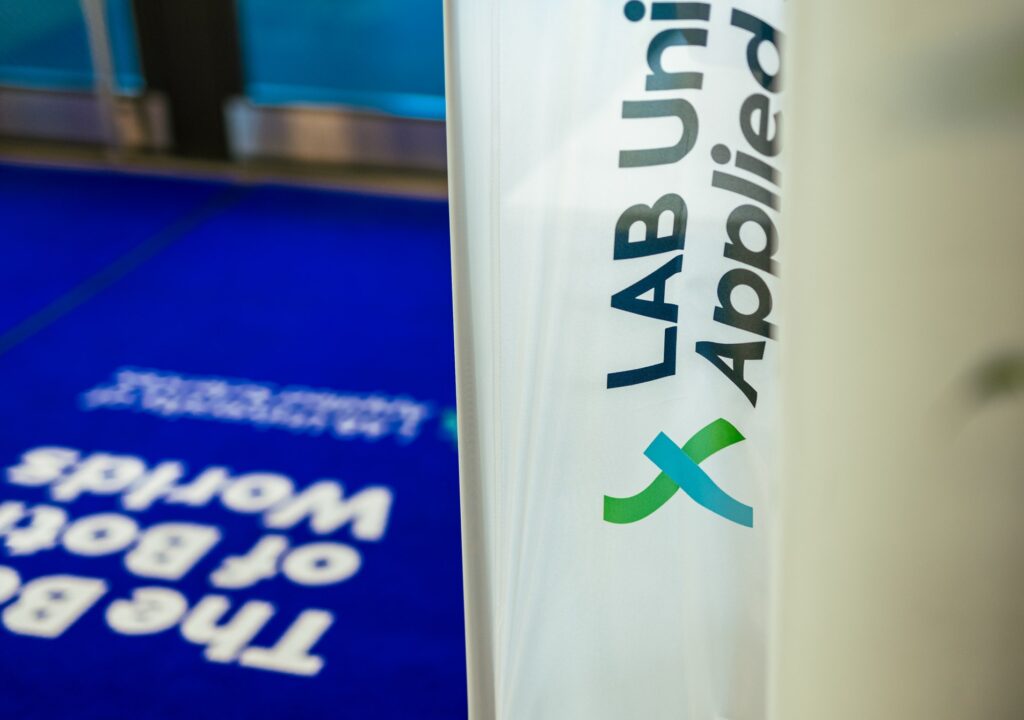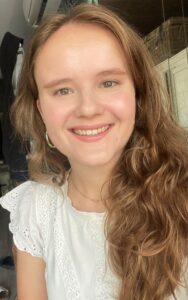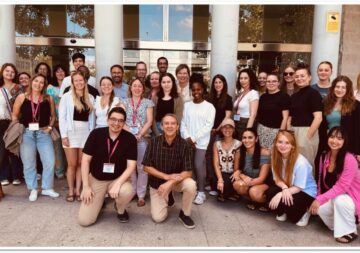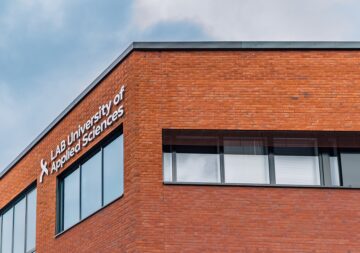
Student exchange offers students the opportunity to expand their knowledge in an international environment, improve language skills, and deepen professional expertise. It also provides new perspectives on different cultures and workplace practices.
Authors: Nina Hietaranta & Taru Simpura
Trends and opportunities in student exchange in Finnish higher education
Student exchange offers students the opportunity to expand their knowledge in an international environment, develop intercultural understanding, and improve language skills. Exchange studies refer to either short-term (less than 3 months) or longer-term (more than 3 months) studies or internships abroad. In Finland, the Finnish National Board of Education classifies periods abroad of three weeks or more as exchange studies. This includes students participating in exchange programs or those who have independently arranged study or internship placements abroad. (Opetushallitus 2024.)
According to statistics, more short-term exchange periods are undertaken by students in universities of applied sciences compared to universities. However, longer exchange periods are more common among university students. The number of long-term exchange periods from universities has consistently been larger, and the numbers have not yet fully recovered from the pandemic downturn. On average, universities of applied sciences have half as many long-term exchange periods as universities. (Opetushallitus 2024.)
Most students participate in exchange programs through the Erasmus program or institutional agreements. The largest numbers of exchange students come from and go to Germany, Spain, and France. The proportion of exchange students from fields such as business, administration, law, and health and welfare is significantly higher than from other disciplines. (Opetushallitus 2024.)
The role of cultural sensitivity in teaching international student
Teaching international students highlights the importance of culturally sensitive teaching. This means adapting pedagogy to the students’ diverse cultural backgrounds and learning styles. Weiler and Caton (2021) emphasize that culturally sensitive teaching is a central aspect of creating equal learning environments, especially in multicultural student groups. In practice, this can involve open discussions about the cultural impact on nursing care, helping students feel that their cultural backgrounds are acknowledged and giving them equal opportunities for learning and success (Weiler & Caton 2021).
At LAB University of Applied Sciences, several international students are currently enrolled in paramedic programs. Teaching international students is rewarding and engaging. Shared discussions about various teaching topics provide enriching perspectives for everyone. Teaching students from different countries and cultures requires a willingness to understand their strengths and challenges. It also calls for curiosity and openness from students, as studying in a multicultural environment offers unique opportunities for personal and professional growth. It is important to address the needs of such diverse groups in teaching. Classes are taught in English, with Finnish being integrated into practical sessions, for example.
An exchange student’s experience at LAB University of Applied Sciences
International exchange student Dominika was asked how she has experienced teaching at LAB and being an exchange student in general. In autumn 2024, Dominika participated in the Child, Adolescent and Family Nursing course for paramedic students as part of her exchange program. Dominika came to LAB University of Applied Sciences through the Erasmus exchange program for a four-month period. In her home country, the Czech Republic, she has about one year of nursing studies left and is specializing in general nursing. In the Czech Republic, students can specialize in general nursing, children’s nursing, paramedic training, or midwifery, with each of these programs lasting three years. Dominika mentioned that about one-fifth of her class in the Czech Republic has participated in exchange programs. Dominika chose Finland as her exchange destination partly because she was interested in the Finnish social and healthcare system.
Dominika feels that she has been well received at LAB and has had the chance to engage in a variety of activities, both academically and in her free time. In addition to her studies in child, adolescent, and family nursing, she has taken courses in community health and well-being promotion, mental health nursing, acute care nursing, and Finnish language studies. However, she mentioned that one challenge she faced was the inability to undertake clinical practice as an exchange student. This can be a common challenge for international students on exchange programs.
Special features of studies in Finland and the Finnish health system
The Child, Adolescent, and Family Nursing course has provided Dominika with valuable lessons and has helped her gain a better understanding of the Finnish healthcare system. Simulation as a learning method was a new experience for her. Additionally, group work and seminars are less common in her home country. In the Czech Republic, teaching generally involves more lectures and practical lessons, with fewer online courses. Although simulation was new to Dominika, she found it to be helpful in her learning, especially in terms of guiding her own thinking. As teachers, we feel that simulation-based teaching provides an excellent opportunity for discussions about the connection between healthcare and culture.
Dominika mentioned that the basic aspects and responsibilities of nursing differ somewhat from practices in her home country. For example, in Finland, nurses have broader rights in certain areas. She was surprised to learn that Finnish nurses are allowed to insert nasogastric tubes without additional specific training, while in the Czech Republic, this is restricted: general nurses are not permitted to insert nasogastric tubes in patients under 10 years old. This task is assigned to nurses specializing in children’s care. In Finland, nurses working in pediatric wards receive orientation for their work, but a formal pediatric nursing qualification is not required.
In general, Dominika observed some interesting differences between the healthcare systems in Finland and the Czech Republic. For instance, the family doctor system is much more common in the Czech Republic, which may support continuity of care and deeper doctor-patient relationships. In contrast, Finland’s primary healthcare system is more decentralized, with patients often seeing different doctors, which can affect the overall cost-effectiveness and patient satisfaction (Eskola et al. 2022).

Image 1. An international exchange is truly worth experiencing. “I am certainly glad that I did mine. “ (Image: Dominika Kaštanová)
Takeaways from Finland
According to Dominika, her exchange experience in Finland was overall successful. She had the chance to experience Finnish culture both through her studies and leisure activities. She particularly enjoyed the sauna, hiking in Repovesi National Park, and visiting Helsinki and Tallinn. Dominika recommends exchange studies to anyone considering it—while language challenges can be part of the experience, they did not pose any obstacles, and everything went smoothly from this perspective too.
The significance of exchange studies for students
Key reasons and motivating factors for going on exchange include internationalization and professional development. Clearly, students want to internationalize and experience different cultures. Many also want to develop their professional skills and see different care models and solutions in other countries. From a future perspective, improving language skills is also particularly beneficial, as it makes future professionals more attractive in the job market. Additionally, self-esteem and appreciation for one’s own work and profession grow.
References
Opetushallitus, 2024. Tilastoja korkeakouluopiskelijoiden ulkomaanjaksoista. Cited 3 Dec 2024. Available at https://www.oph.fi/fi/tilastot/tilastoja-korkeakouluopiskelijoiden-ulkomaanjaksoista
Eskola, P., Tuompo, W., Riekki, M., Timonen, M., & Auvinen, J. 2022. Hoidon jatkuvuusmalli: Omalääkäri 2.0 -selvityksen loppuraportti. Cited 29 Nov 2024. Available at http://urn.fi/URN:ISBN:978-952-00-9884-1
Weiler, T. & Caton, E., 2021. Evidence-Based Practices for Culturally Responsive Medical Education. Cited 29 Nov 2024. Available at https://doi.org/10.1136/bmjmed-2021-000346
Authors
Nina Hietaranta works as nursing lecturers at LAB University of Applied Sciences, where they teach child, adolescent, and family nursing to paramedic and other international nursing students.
Taru Simpura works as nursing lecturers at LAB University of Applied Sciences, where they teach child, adolescent, and family nursing to paramedic and other international nursing students.
Illustration: Teemu L.
Reference to this article
Hietaranta, N. & Simpura, T. 2025. Valuable insights from an exchange student at LAB. LAB Pro. Cited and the date of citation. Available at https://www.labopen.fi/en/lab-pro/valuable-insights-from-an-exchange-student-at-lab/






